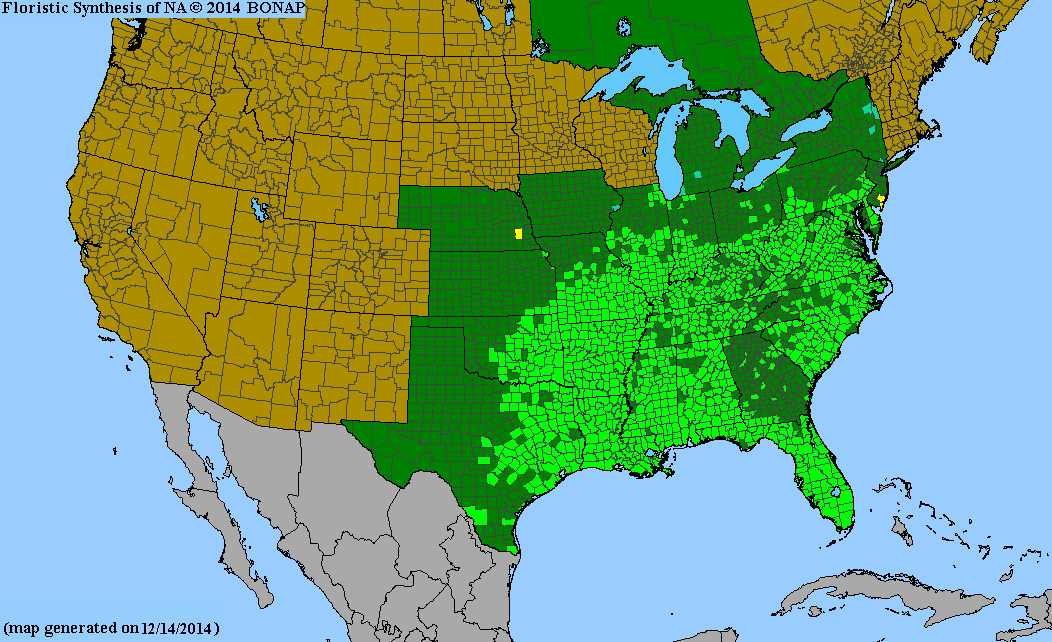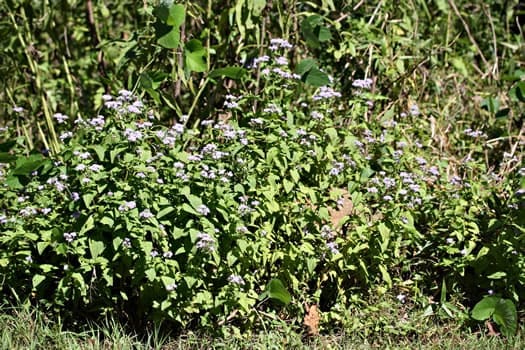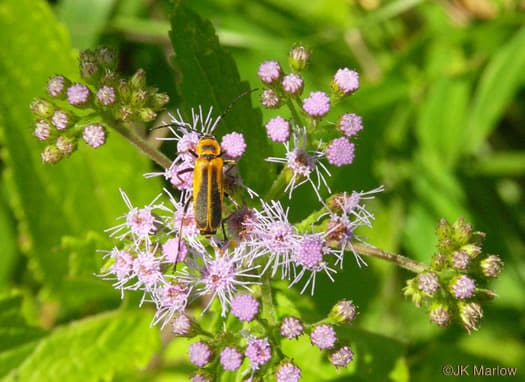Asteraceae
blue mistflower
Conoclinium coelestinum
Synonyms
Eupatorium coelestinum, Eupatorium violaceum, Conoclinium dichotomum
Other Common Names
wild ageratum, hardy ageratum, blue boneset
Plant Type
Herbaceous Wildflower
Life Cycle
Perennial
Typical Size
2 ft. tall
2 ft. wide
Tolerant of
Deer, Occasional Flooding
Inolerant of
Dry Soil
Propagation
By seed, By cutting, By division
Plant Propagation Notes
Seeds need to be sown in fall or be cold stratified for germination. Cuttings are best taken in late spring.
Plants/Diseases
Slight susceptibility to powdery mildew. Infrequent incident of leaf miners or aphids.
Wildlife Benefits
Nectar/pollen source for pollinating insects
Leaves
Leaf arrangement opposite. Leaf shape triangular to deltate or ovate. Margins serrate to serrate-dentate.
Flowers
Thistle like aster flowers lacking rays. Blue to blue-violet or rosy-violet, 2-2.5 mm.
Fruit
Seeds hairy with bristly tips
Toxicity
No known toxicity

USDA Hardiness Zones
5, 6, 7, 8, 9, 10
Light Exposure
Full Sun, Part Sun/Shade
Soil Moisture
Medium, Moist
Soil Drainage
Well-drained, Poorly Drained
Native in South Carolina?
Yes
Plant Native Habitat
Stream banks, lakeshores, coastal and inland sands, pine-oak woodlands, low woods, flood plains, ditches, ravines, bogs, wet slopes, pine savannas, disturbed sites, roadsides, along railroads
Global Conservation Status (NatureServe)
Secure (G5)
Federal Conservation Status (USFWS)
Not Listed
Distribution Notes
Common in the SC Coastal Plain and Piedmont, and Uncommon in the Mountains



